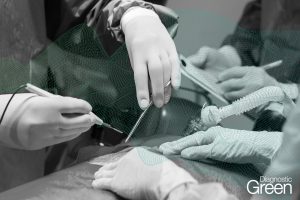Background: Assessing perfusion in free flaps is crucial in clinical practice. Indocyanine green (ICG) angiography offers a more objective and reproducible method, utilizing near-infrared imaging to monitor flap vascularization. This study aims to evaluate the efficacy of diluted ICG as a tool for assessing free flap perfusion.
Methods: This pilot randomized clinical trial compares the fluorescence concentrations of ICG at 3 different dilutions: 5 mg/mL (standard concentration), 2.5 mg/mL (half the standard concentration), and 0.5 mg/mL (one-tenth of the standard concentration). Inclusion criteria required participants to have serum albumin levels above 3 g/dL, hemoglobin levels over 10 g/dL, and no comorbidities. Participants were randomized into 3 groups based on ICG concentration. Fluorescence analysis was performed using ImageJ software to determine mean gray values. Both surgeons and data analysts were blinded to the ICG concentrations administered, ensuring unbiased evaluation.
Results: Forty-five patients undergoing free flap surgery, predominantly male (60%) with a mean age of 37.76 ± 19.79 years and a mean body mass index of 21.23 ± 4.49 kg/m², primarily received osteoseptocutaneous fibular free flaps (46.67%), with an average skin flap area of 66.07 ± 46.94 cm². The primary etiology was underlying tumors (84.4%), with the head and neck as the most common reconstruction site (82.2%). The superior thyroid artery was the most frequently used recipient vessel (37.78%). Analysis revealed mean gray values of 64.10 ± 8.27 (5 mg/mL), 79.03 ± 2.7 (2.5 mg/mL), and 33.56 ± 3.47 (0.5 mg/mL), with 2.5 mg/mL yielding the highest value (P < 0.001).
Conclusions: Findings suggest using 2.5 mg/mL concentration enhances fluorescence emission, offering a dosage alternative in clinical practice.




